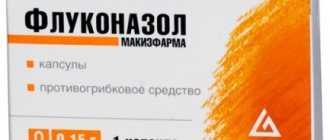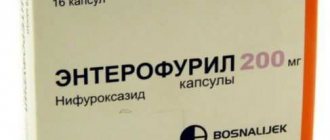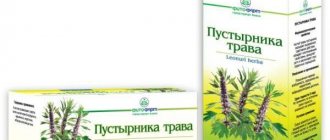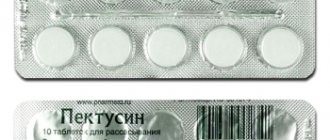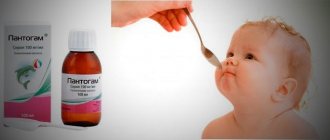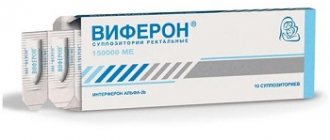Instructions for use of Paracetamol
As a medicine that reduces fever, Paracetamol is used for no more than three days in a row, and as a means to relieve pain of various etiologies - no more than five. You can increase or decrease the dose, as well as stop taking the drug, only in agreement with the doctor who is treating the baby.
Features of dosage and administration for babies up to one year old
The drug is most often not used in the treatment of newborns. For a baby over 3 months old, it is necessary to purchase rectal suppositories with a dose of paracetamol 125 mg. No more than 4 suppositories are allowed per day with an interval of at least 4 hours. It is recommended to use the medicine no more than 2-4 times a day. Doctors advise using the suppository at night, because the maximum rise in temperature occurs at this time.
It is important to follow the dosage and time intervals very precisely, to avoid overdose, so that the drug does not give undesirable effects for the child. The duration of therapy should not exceed 5-7 days
Paracetamol in this form perfectly relieves fever and pain, and the effect of rectal administration of the drug lasts much longer than from taking a suspension with paracetamol as an active ingredient.
Calculation of the dosage of the drug for children from 1 year of age
- Children from one to three years old with a body weight not exceeding 15 kg are administered 1 suppository containing 125 mg of paracetamol every 6 hours until the temperature normalizes.
- For children aged 3-6 years weighing 16-21 kg, the dose per administration will be 250 mg of the active substance. Interval – every 8-12 hours. The daily maximum is 1000 mg.
- For children aged 6-12 years and weighing up to 35 kg, a suppository with a dosage of 250-500 mg of the active component is used per application. The frequency of administration is 3-4 times a day.
- The dose for children over 12 years of age and weighing more than 35 kg will be 500 mg per administration. The interval between drug administrations is 6 hours. The maximum permissible total dosage per day is 2000 mg.
Suppositories should be used only when necessary and according to indications - in case of high temperature, pain. The duration of therapy does not exceed 3 days; in exceptional cases, the pediatrician can extend treatment with this medicine to 5-6 days.
It should be noted that the indication for insertion of a suppository is a temperature of 38.5°C and above. Sometimes, in case of life-threatening conditions for the baby, the doctor may prescribe the use of this medicine at lower temperatures. If the child’s body is weakened, the recommended dosage should be reduced by a third or even half.
Storage conditions and periods
The children's suspension is stored for three years from the date of production. The drug is stored in a dark, dry place out of reach of children.
The syrup has proven itself positively in the fight against hyperthermia and pain. The medicinal form has a strong therapeutic effect, showing its direct activity within a few minutes after the first use.
Before starting self-medication with Paracetamol, prohibitions on taking it are excluded and the volume of the drug is calculated exactly according to age in order to minimize the risk of adverse reactions. At high temperatures, you can wipe the baby with warm water, remove the diaper or warm clothes. Such actions, along with taking an antipyretic, will help reduce the temperature.
Paracetamol (rectal suppositories, 250 mg)
Rectal suppositories 125 and 250 mg
Compound
One suppository contains
active substance paracetamol 125 or 250 mg,
excipients base for suppositories Suppotsir (semi-synthetic glycerides) (Hard fat) – up to 1 g.
Description
Suppositories are cylindrical-conical, white or white with a yellowish tint. The cut is allowed to have an airy and porous core and a funnel-shaped recess
Pharmacotherapeutic group
Analgesics-antipyretics. Anilides.
PBX code N02BE01
Pharmacological properties
Pharmacokinetics
Absorption is fast and complete. The maximum concentration of paracetamol in the blood plasma after using rectal suppositories is achieved after 0.5-2 hours.
Penetrates into most tissues and biological fluids of the body. Penetrates through the placental barrier and into breast milk.
Binding to blood plasma proteins is weak 10-15%.
The main part of paracetamol is metabolized in the liver along the glucuronide and sulfate pathways with the formation of inactive metabolites, a small part (about 5%) is metabolized by hydroxylation with the formation of a reactive metabolite - N-acetyl-p-aminobenzoquinone (this biotransformation occurs in the liver and kidneys), which in turn is inactivated by glutatitone. It is excreted in the urine in the form of metabolites; less than 5% of paracetamol is excreted unchanged. The half-life of paracetamol after the use of rectal suppositories is about 1-4 hours.
In elderly patients, drug clearance decreases and the half-life increases.
Pharmacodynamics
It has a pronounced antipyretic, analgesic and weak anti-inflammatory effect. Paracetamol blocks COX-1 and COX-2 mainly in the central nervous system, affecting the centers of thermoregulation and pain.
In inflamed tissues, cellular peroxidases neutralize the effect of paracetamol on COX, which explains the weak anti-inflammatory effect.
The absence of a blocking effect on the synthesis of prostaglandin in peripheral tissues determines the absence of its negative effect on water-salt metabolism and on the mucous membrane of the gastrointestinal tract. Well absorbed from the gastrointestinal tract. Metabolized in the liver. Excreted by the kidneys.
Directions for use and doses
Rectally.
Children: single dose – 15 mg/kg body weight; maximum daily dose –
60 mg/kg body weight.
At the age of 3 months (6 kg) to 1 year (8 kg): single dose – from 60 mg to 125 mg. If necessary, apply 4 times a day with an interval of 4-6 hours between doses.
From 1 year (8-10 kg) to 5 years (14-16 kg): single dose - from 125 mg to 250 mg. If necessary, apply 4 times a day with an interval between doses
4-6 hours
From 5 years (16-20 kg) to 12 years (30-32 kg): single dose from 250 mg to 500 mg. If necessary, apply 4 times a day with an interval of 4-6 hours between doses.
Adults and children over 12 years of age (with body weight more than 60 kg): minimum single dose – 500 mg, maximum single dose – 1 g. Frequency of administration – 4 times a day with an interval between doses of 4-6 hours. Maximum daily dose – 4 G.
The duration of treatment is 3 days when used as an antipyretic and 5 days when used as an analgesic.
Drug interactions
Paracetamol enhances the effect of anticoagulants.
Concomitant use with salicylates significantly increases the risk of nephrotoxicity.
Concomitant use with inducers of microsomal oxidation and hepatotoxic drugs (barbiturates, anticonvulsants, tricyclic antidepressants, rifampicin, isoniazid, butadione, ethanol) increases the risk of hepatotoxic action of the drug.
Concomitant use with metoclopramide may increase the absorption of paracetamol.
Concomitant use with probenecid reduces the clearance of paracetamol and increases the half-life.
Simultaneous use with chloramphenicol leads to an increase in the toxic properties of the latter.
Store in a dry place, protected from light, at a temperature of 15 to 25 °C.
Keep out of the reach of children!
3 years
Do not use after expiration date
Manufacturer
FARMAPRIM LLC
MD-2028, Republic of Moldova,
Chisinau, st. G. Tudor, 3
Address of the organization that accepts claims from consumers regarding the quality of products (products) on the territory of the Republic of Kazakhstan
Representative of the company: Almaty, Ainabulak-1 microdistrict, building 20, apt. 67
Phone/fax: 252-64-13, 8-777-242-46-49
Pharmacological properties
Pharmacodynamics
Paracetamol is a medicinal substance that has antipyretic and analgesic effects. It has virtually no anti-inflammatory properties.
The mechanism of action is due to the ability to block cyclooxygenase in the central nervous system, affecting the centers of thermoregulation and pain.
The drug has virtually no anti-inflammatory properties. It does not affect water-electrolyte metabolism and the condition of the gastrointestinal mucosa (GIT), since it has a very small effect on the synthesis of prostaglandins in peripheral tissues.
Pharmacokinetics
Paracetamol is characterized by high absorption; it is quickly and almost completely absorbed from the gastrointestinal tract. Binds to plasma proteins by 10–25%. The maximum plasma concentration is reached after 30–120 minutes and is 5–20 mcg/ml.
The drug penetrates the blood-brain barrier. Less than 1% of the administered dose passes into mother's breast milk. The distribution of the substance in body fluids is relatively even.
Paracetamol is metabolized primarily in the liver in three main ways, such as oxidation by microsomal liver enzymes, conjugation with sulfates and conjugation with glucuronides. During oxidation, intermediate toxic metabolites are formed, which are subsequently conjugated first with glutathione, then with mercapturic acid and cysteine. For this method of metabolism, the main isoenzymes of the cytochrome P450 system are CYP2E1 (mainly), CYP1A2 and CYP3A4 (minor role). If there is a deficiency of glutathione in the body, these metabolites can cause damage and necrosis of hepatocytes. Additional metabolic pathways are methoxylation to 3-methoxyparacetamol and hydroxylation to 3-hydroxyparacetamol, which are subsequently conjugated to sulfates or glucuronides.
In children under 10 years of age, the main metabolite of the drug is paracetamol sulfate, in children over 12 years of age - conjugated glucuronide.
Conjugated metabolites of paracetamol (conjugates with glutathione, sulfates, glucuronides) are characterized by low pharmacological activity, including toxic.
When taking a therapeutic dose, the total clearance is 18 l/h, the half-life (T½) is from 1 to 4 hours. When taking therapeutic doses, 90–100% of the taken dose of paracetamol is excreted in the urine within 24 hours. The main amount of the drug after conjugation is released in the liver in the form of glucuronide (60–80%) and sulfate (20–30%). About 5% of the dose is excreted unchanged.
In elderly patients, paracetamol clearance decreases and T½ increases.
In patients with severe renal failure (creatinine clearance 10–30 ml/minute), the elimination of paracetamol is slowed down, the rate of elimination of sulfate and glucuronide is lower than in healthy individuals.
Indications for use of the drug
All types of Paracetamol have exactly the same indications for use. Everyone knows that the medicine helps with fever, but it will also help with mild pain.
The drug can be taken when:
- rheumatic pain;
- muscle discomfort due to colds;
- headache, toothache;
- periodic female pain;
- neuralgia.
A strong effect is noticeable with influenza or ARVI, when aches in the joints and muscles appear along with the temperature
It is important to consider that the remedy is aimed only at relieving pain and reducing high fever, but not treatment. Complex therapy should be used to prevent complications
Shake the bottle with the drug before use. The baby should be offered syrup before meals, washed down with plenty of clean water. The liquid should not be diluted with compote or juice, as the medicine has a pleasant taste. For infants, it is allowed to mix the product with milk or porridge.
The dosage is selected individually, based on the age, weight and diagnosis of the baby. Children under 2 months of age must consult a doctor. At an older age (12 months), it is allowed to take 20 ml of medicine per day, at 1 year - 28 ml, after two years - 36 ml. For preschoolers, a volume of 40 ml is suitable, and after 7 years – 56 ml. At the age of 9-12 years, 80 ml of the product is allowed.
The syrup should not be given more than four times a day, and the time interval between doses should be 4-5 hours. The course of therapy is approximately three days; longer use is undesirable.
Using candles
Candles can be used for very young children. Before use, you must wash your hands, remove the suppository from the package and carefully insert it into the baby’s anus. It is recommended to carry out the procedure after a bowel movement or enema. For a smaller dosage, it is permissible to divide the candle into several parts, smoothing the edges of the cut.
Suppositories should be used 2-4 times a day with an interval of 3 hours. The permissible dose must also be calculated using a simple formula: multiply weight by 10 mg. Do not use more than 60 mg/kg of medication per day. The product is available in different dosages. Before the age of 3 years, no more than 100 mg should be used, after 3 years – up to 200 mg. From 5 to 10 years, it is recommended to choose a dosage of 250 mg at a time. The duration of treatment is no more than 3-5 days.
Tablet dosage
The dosage of tablets is calculated as follows: per 1 kg of weight there is up to 15 mg of the drug. Duration of treatment is up to 3-5 days. In the absence of symptoms, the amount of medication should be gradually reduced. The tablets do not need to be given frequently: the maximum dose per day is divided into several doses and taken at intervals of 4 hours. What dose is safe? It is permissible to use up to 60 mg per 1 kg of the child’s body per day.
Instructions for use Paracetamol for children, suspension dosage
The suspension is taken orally, 1–2 hours after a meal, with plenty of water or other liquid. Shake the bottle well before use.
For the correct dosage of the drug, use the measuring cup, spoon or syringe included inside the package.
The optimal dose is determined taking into account the age and body weight of the child. The average dosage is 10-15 mg of paracetamol per 1 kg of child’s body weight, the maximum daily dose should not exceed 60 mg of paracetamol per 1 kg of child’s body weight.
According to the instructions for use, Paracetamol for Children suspension can be taken in 1 dose at intervals of 4–6 hours, but no more than 4 times during the day.
Standard dosages of the suspension according to the instructions:
- 2–3 months (4.5–6 kg) – the drug can be used only as prescribed by a doctor;
- 3–6 months (6–8 kg) – 4 ml (96 mg) / 16 ml (384 mg);
- 6–12 months (8–10 kg) – 5 ml (120 mg) / 20 ml (480 mg);
- 1–2 years (10–13 kg) – 7 ml (168 mg) / 28 ml (672 mg);
- 2–3 years (13–15 kg) – 9 ml (216 mg) / 36 ml (864 mg);
- 3–6 years (15–21 kg) – 10 ml (240 mg) / 40 ml (960 mg);
- 6–9 years (21–29 kg) – 14 ml (336 mg) / 56 ml (1344 mg);
- 9–12 years (29–42 kg) – 20 ml (480 mg) / 80 ml (1920 mg).
The standard duration of use without consulting a doctor is up to 3 days, and to reduce the severity of pain – 5 days.
The recommended doses of the suspension should not be exceeded, since an overdose of paracetamol can lead to liver failure.
In patients with impaired renal function, it is necessary to increase the interval between doses of the drug. If the creatinine clearance is 10–50 ml/min, this interval should be at least 6 hours, and in cases where the creatinine clearance is less than 10 ml/min – 8 or more hours.
The suspension contains sugar, which must be taken into account when using it in children with concomitant diabetes mellitus.
Side effects
The instructions warn about the possibility of developing the following side effects when prescribing Children's Paracetamol:
- Allergic reactions to components (including skin rash, itching, angioedema).
- Rarely - hematopoietic disorders (anemia, thrombocytopenia, methemoglobinemia).
Contraindications
It is contraindicated to prescribe Paracetamol for Children in the following cases:
- fructose intolerance;
- severe impairment of renal or hepatic function;
- age less than 2 months;
- simultaneous use of other drugs containing paracetamol;
- hypersensitivity to any component of the drug.
Carefully:
- liver dysfunction, including Gilbert's syndrome;
- viral hepatitis;
- genetic absence of the enzyme glucose-6-phosphate dehydrogenase;
- impaired renal function (creatinine clearance <30 ml/min);
- anorexia/bulimia;
- dehydration;
- hypovolemia;
- severe blood diseases (leukopenia, severe anemia, thrombocytopenia);
- diabetes.
Overdose
Symptoms of acute overdose are gastrointestinal disorders (loss of appetite, stomach pain, nausea and vomiting, loose stools, intestinal cramps), pale skin, increased sweating, acute liver failure.
The first signs of liver dysfunction usually appear 12–48 hours after taking an excessive dose of the drug.
In case of severe overdose, arrhythmia, liver failure with progressive encephalopathy, pancreatitis, acute kidney failure with tubular necrosis, coma, and death may occur.
In chronic overdose, nephrotoxicity and hepatotoxicity may occur.
In case of overdose, it is recommended to perform gastric lavage, but no later than 4 hours after consuming the drug. Taking adsorbents, for example, activated carbon, introducing acetylcysteine (within 8 hours after an overdose) and methionine (within 8–9 hours after poisoning).
Compound
According to the instructions, children's "Paracetamol" in syrup and suspension contains the main active ingredient paracetamol in a dosage of 120 mg/5 ml. Auxiliary components include:
- Avicel RC-591, or microcrystalline cellulose (sodium carmellose);
- xanthan gum, or xanthan gum;
- nipagin, or methyl parahydroxybenzoate;
- sugar, or sucrose;
- propylene glycol;
- glycerin, or glycerol;
- food sorbitol, or sorbitol;
- orange or strawberry flavoring;
- purified water.
Drug interactions
When used simultaneously with inducers of microsomal liver enzymes and drugs with hepatotoxic effects, there is a risk of increasing the hepatotoxic effect of paracetamol.
When used simultaneously with anticoagulants, a slight or moderate increase in prothrombin time is possible.
When used simultaneously with anticholinergic drugs, the absorption of paracetamol may be reduced.
When used simultaneously with oral contraceptives, the elimination of paracetamol from the body is accelerated and its analgesic effect may be reduced.
When used simultaneously with uricosuric drugs, their effectiveness decreases.
With simultaneous use of activated carbon, the bioavailability of paracetamol decreases.
When used simultaneously with diazepam, the excretion of diazepam may be reduced.
There are reports of the possibility of enhancing the myelosuppressive effect of zidovudine when used simultaneously with paracetamol. A case of severe toxic liver damage has been described.
Cases of toxic effects of paracetamol have been described when used simultaneously with isoniazid.
When used simultaneously with carbamazepine, phenytoin, phenobarbital, primidone, the effectiveness of paracetamol decreases, which is due to an increase in its metabolism (glucuronidation and oxidation processes) and excretion from the body. Cases of hepatotoxicity have been described with the simultaneous use of paracetamol and phenobarbital.
When using cholestyramine for a period of less than 1 hour after taking paracetamol, the absorption of the latter may be reduced.
When used simultaneously with lamotrigine, the excretion of lamotrigine from the body moderately increases.
When used simultaneously with metoclopramide, it is possible to increase the absorption of paracetamol and increase its concentration in the blood plasma.
When used simultaneously with probenecid, the clearance of paracetamol may be reduced; with rifampicin, sulfinpyrazone - it is possible to increase the clearance of paracetamol due to an increase in its metabolism in the liver.
When used simultaneously with ethinyl estradiol, the absorption of paracetamol from the intestine increases.
Use during pregnancy and lactation
There are no negative effects of paracetamol when used during pregnancy and lactation. The drug penetrates the placental barrier and is excreted in breast milk (no more than 0.23% of the dose taken by the mother). Experimental studies have not established any teratogenic, embryotoxic, or mutagenic effects of the substance. However, paracetamol is prescribed to pregnant and breastfeeding women only after assessing the expected benefits and potential risks.
There are no data on the effect on fertility.
Directions for use
The tablets are intended exclusively for internal oral use. You can take the tablets after meals only 1-2 hours later, which will increase the absorption of the drug components. For children under 6 years of age, it is recommended to give crushed Paracetamol tablets. In this form, the medicine is absorbed into the blood faster, and the likelihood of the tablet getting stuck in the throat is eliminated.
Paracetamol is a drug that reduces the symptoms of the disease, but does not have a therapeutic effect. After taking the drug, additional use of a number of different medications is required to eliminate the causes of the developing disease. Paracetamol can eliminate the unpleasant symptoms of pain and fever. To determine the causes of pain and fever, you need to consult a doctor for help to undergo an examination.
Overdose and consequences
If a child takes the medicine in a single dose of more than 150 mg/kg body weight, the consequences of an overdose will cause serious complications on the liver and can also cause death.
There are three stages of child poisoning with Paracetamol:
- First stage. The manifestation of an overdose is observed on the first day. The main signs of an overdose are symptoms such as nausea and vomiting.
- Second stage. Appears on the second day after poisoning. The main signs of poisoning can be diagnosed using laboratory tests. The number of liver enzymes in the blood changes.
- Third stage. Appears after 72-96 hours. The main signs of poisoning are an increase in liver enzymes in the blood, as well as a violation of the acid-base balance in the blood.
Medical care for overdose is based on gastric lavage. Parents can give their child activated charcoal or acetylcysteine. After this, you need to call an ambulance or take the baby to the hospital for gastric lavage.
If the use of Paracetamol provoked the development of liver failure, the child must be hospitalized. If the case of liver failure is severe, a liver transplant may be required.
Operating principle
The main mechanism of operation of this pharmaceutical agent is its ability to inhibit cyclooxygenase, a special enzyme that is necessary to catalyze the conversion of arachidonic acid into prostaglandins. The latter substances are precisely responsible for the manifestation of pain and an increase in body temperature above physiological values.
Suppression of the work of this enzyme, as well as a decrease in the amount of prostaglandins, leads to an effect on the structures of the central nervous system. This gives the following results:
- bringing body temperature to normal;
- reducing the severity of pain;
- slight reduction in inflammation.
Oral administration of the drug leads to its rapid absorption by tissues and penetration into the blood plasma. The active substance is distributed throughout the body, penetrating the blood-brain barrier and ending up among the structures of the brain.
Metabolic processes take place with the participation of the liver, where the main substance breaks down into a number of inactive metabolites. They are excreted outside the body along with urine. The half-life of the drug is 23 hours.
Paracetamol for children dosage in tablets at fever: application features
With the development of colds, the first sign in children is an increase in temperature.
If pediatricians prohibit giving children antipyretics at elevated temperatures, then if the thermometer readings are above 39 degrees, you should definitely resort to medication.
One of the most effective ways to reduce high fever is a medication called Paracetamol. Is it possible to give children Paracetamol in tablets, at what age should it be used, as well as the specific dosage of the drug, we will find out further.
Dosage of Paracetamol tablets
Paracetamol for fever is available in three forms: tablets, syrup and rectal suppositories. All forms of the drug are intended to reduce high fever. Paracetamol in certain dosage forms should be given to a child depending on his age.
The main advantage of the drug in tablet form is its low cost, especially when compared with syrups.
Many parents resort to medication in tablets only when the child turns 5 years old. It is at this age that a baby can swallow a pill without it getting stuck in the throat.
Some parents are in no hurry to resort to using the drug in tablets, and give it from the age of 6.
The instructions for use indicate that children can be given the drug in tablet form at 2 years of age and older.
However, it is important to note that at 2-3 years of age it is preferable to give syrup to babies, and before 2 years of age it is best to use rectal suppositories. It is possible for young children to take Paracetamol in tablet form if they have a fever, but initially the tablet should be crushed and then given to drink with sweetened water.
It is possible for young children to take Paracetamol in tablet form if they have a fever, but the tablet should initially be crushed and then given to drink with sweetened water.
How to give Paracetamol tablets to children depends on their age and weight. Paracetamol for children with fever should be calculated based on the following dosage: per 1 kg of baby’s body weight, 10 mg of the drug is required. For a baby whose weight is 10 kg, 100 mg of the drug will be required.
Interesting to know! The drug can bring down a child’s temperature approximately 25-30 minutes after administration.
Is it possible to give a child adult Paracetamol?
In fact, adult Paracetamol differs from children's only in the form of release and the amount of active substance. Therefore, children should not take it, as it is likely to lead to an overdose. We must not forget that this medication is contraindicated for newborns. Even a severe cold after birth in this case is not an indication for use.
To make it more convenient to take the tablet, you need to divide it into quarters or dilute it with water. Children two years old and younger are not allowed.
Paracetamol dosage for children
1. Syrup
The drug in this case is a sweet-tasting suspension. Children really like it, and the kids take the medicine with pleasure. The suspension can be taken from the second month of a child’s life. In some cases, pediatricians give the go-ahead for the use of the drug immediately from the moment of birth, selecting an individual dosage.
Dosing accuracy is determined using a special syringe with graduated divisions. Paracetamol (the dosage for children is indicated a little lower) even tastes somewhat cloying, but it cannot be diluted with water. It is better to give it to the child to drink after taking it.
The dose is calculated as follows:
from 0...6 months - the amount of the drug will be determined by the pediatrician, taking into account the baby’s body weight; 6 months…1 year – 2.5…. 5 ml; 1….3 years – 5….7.5 ml; 3….6 years – 7.5…..10 ml; 6….12 years – 10…..15 ml.. The number of doses of the drug should not exceed four times in a full day
In this case, the interval between them should be at least 4 hours
The number of doses of the drug should not exceed four times in a full day. In this case, the interval between them should be at least 4 hours.
2. Candles
The next format for releasing an antipyretic drug. Suppositories are administered rectally, i.e. the suppository must be carefully inserted into the child’s anus. In this case, paracetamol (the dosage for children in this case also depends on age) is absorbed very quickly in the intestines, reducing the temperature more effectively.
For babies who are not yet 3 months old, the doctor selects the dose. Suppositories cannot be used at home at this age, as they can cause an overdose. Paracetamol can be prescribed rectally to a baby only in a hospital setting and in the most extreme cases.
When purchasing candles, you must pay attention to the indicated dosage in grams. Children aged:
Children aged:
- from 3 to 12 months a suppository weighing 0.08 g is prescribed;
- from 1 year to 3 years – a candle, weighing 0.17 g;
- from 3 to 6 years – a suppository, dosage 0.33 g;
- from 6 to 12 years – two suppositories of 0.33 g each.
The drug is also used no more than four times in 24 hours. The time interval between doses is at least four hours.
3. Tablets
They are used quite rarely in young children, since it is difficult to force the child to swallow it. You can grind the pill into powder and dilute it with water or compote (tea, juice). But even in this form, children are very reluctant to swallow the medicine. Paracetamol tablets can be given to children (the dosage is based on the child’s age) only after the child turns 2 years old.
Most often, tablet paracetamol is available in a dosage of 200 mg. In this case, the child is aged:
- 2…6 years, ½ tablet per dose is prescribed;
- 6...12 years - she is a complete pill;
- over 12 years old – 1…2 tablets.
The number of techniques and the time interval between them are the same as those discussed earlier.
Indications for use
Paracetamol is a classic antipyretic and cannot be used as a drug to treat any disease. An increase in body temperature is a clear sign of the development of the disease. Paracetamol is intended to relieve this symptom and alleviate the condition of a sick child. Using the product for more than three days is extremely undesirable.
Paracetamol is prescribed for use in the following cases:
- If a child's body temperature exceeds 38 degrees. In general, it is not recommended to knock it down if the number is less than 38.5...38.9. But high body temperature can cause the baby to develop seizures.
- If the baby has mild pain syndrome. For example, for headaches, during teething, neuralgia and other conditions.
Release form and mechanism of action
The drug is presented in several forms, among which the following are usually used in the treatment of children of three years:
Rectal suppositories. They are distinguished by their white color, simple composition (except for paracetamol, in doses from 50 to 500 mg they contain only a fat base), and oblong shape. This medication helps if the child has allergies or vomiting, but it begins to show its effect later than other dosage forms, so it is often used at night.
Suspension. This sweet preparation with orange or strawberry flavor contains paracetamol in a dose of 120 mg/5 ml, but also includes other ingredients (xanthan gum, sucrose, sorbitol, propylene glycol, etc.) that can provoke an allergic reaction. Due to the liquid structure and the presence of a measuring syringe in the package (it can be replaced with a spoon), dosing this Paracetamol is very easy, and children in most cases swallow it without problems.
The drug is available in the form of tablets of 200 and 500 mg for adults. Children are given the solid form from the age of six, so the use of this Paracetamol is not recommended at 3 years of age. However, in rare cases, when there is no other antipyretic medicine at home, the child can be given part of the tablet, checking the dose with the doctor. If the baby cannot yet swallow the medication, the tablet is crushed and diluted in a spoon with water, compote or juice.
Such effects determine the following indications for the use of Paracetamol:
- Fever (usually the drug is given at temperatures above +38.5 degrees).
- Pain syndrome of moderate or weak strength.
The use of paracetamol in world medical practice
The drug paracetamol began to be widely used in therapy only in the 50s of the last century, despite the fact that it was invented back in the 19th century. Even then, a number of studies were carried out in terms of effectiveness and safety. However, there were errors in the interpretation of research results, so for a long time doctors prescribed patients predominantly phenacetin. And only in the middle of the 20th century, studies showed that it is a metabolite of phenacetin and acetanilide, and accordingly, it is safer in terms of use.
When taking phenacetin or acetanilide, certain reactions occur in the body, which result in the formation of paracetamol, which has a direct therapeutic effect. Doctors came to the conclusion that there is no need for the human body to independently convert one drug into another, but it is better to take paracetamol in its finished form. Thus, paracetamol has become one of the most popular drugs in modern pharmaceuticals.
Contraindications and possible side effects
The safety of taking Paracetamol by children is relative. Doctors prohibit the use of this medicine for the following pathologies:
- allergy to the components of the product;
- asthma;
- blood diseases;
- liver diseases;
- diabetes (suspension contains sucrose);
- stomach ulcer;
- blood clotting disorder;
- kidney diseases;
- reaction to other non-steroidal anti-inflammatory drugs in the past;
- diarrhea;
- diseases of the rectum;
- deficiency of glucose-6-phosphate dehydrogenase;
- bleeding from the rectum.
In rare cases, young children may experience a skin reaction in the form of an itchy rash.
If there is a glutathione deficiency in the body, Paracetamol can have a toxic effect on the liver, so doctors recommend taking special care when using this drug in children and adhering to dosages according to the instructions
If the child received any other drugs with para-acetaminopherol as an active ingredient (Cefekon, Panadol, etc.), then it is necessary to maintain a time interval of 4 hours before administering the suppository. Otherwise, an overdose and poisoning of the body with Paracetamol may occur.
It is important to know that Paracetamol does not treat the cause, but only affects the symptoms, alleviating the baby’s condition. If the baby has abnormal liver function or the dosage regimen of the drug according to the instructions has been violated, the following symptoms may appear within 24 hours:
If the baby has abnormal liver function or the dosage regimen of the drug according to the instructions has been violated, the following symptoms may appear within 24 hours:
- abdominal pain;
- nausea;
- vomit;
- symptoms of pancreatitis;
- pale skin;
- arrhythmia;
- disturbances in the conversion of sugars in the body;
- anemia;
- neutropenia;
- agranulocytosis;
- pancytopenia;
- rectal irritation;
- tenesmus;
- methemoglobinemia;
- hives;
- anaphylactic reactions;
- leukopenia;
- Quincke's edema.
If you experience any unwanted effects associated with the use of this medicine, you should immediately stop taking it and seek help from a specialist. In most cases, children tolerate this drug well, and such phenomena are quite rare, but the possibility of their occurrence cannot be ignored.
Paracetamol should be used with special care in children with Gilbert's syndrome. If, unknowingly, drug therapy lasted more than 7 days, blood and liver tests should be performed. While taking this medication, data on plasma sugar and uric acid can be significantly distorted, so these tests are recommended to be taken 1-2 weeks after stopping the drug.
Additional Information
If, due to the underlying disease, appetite is greatly reduced, then the dosage of syrup or suspensions should be halved so as not to irritate the mucous membranes of the human digestive system.
ascorbic acid enters the body at the same time as it .
Vitamin C helps slow down the elimination of the drug from the body. And if the baby’s head and body are burning, and his feet are freezing, then such hyperthermia is called “white” and it is recommended to give him no-shpa to dilate the blood vessels. Once the extremities become warm, you can take medications to reduce the temperature.
If the temperature rises too often or is very high, call a doctor . It is possible that the drug is not effective for you and your doctor will recommend another one.
As you can see, before giving your child paracetamol, you should carefully study the instructions for its use. Take into account his condition and select the correct form of administration and dosage. In this case, the child will recover much faster.
Is it dangerous to overdose on a medicine?
The instructions indicate that in case of an overdose of the drug you should consult a doctor. We found out how to give Paracetamol to children, but why is an overdose of this drug so dangerous? In fact, Paracetamol is one of the safest antipyretic drugs. In case of a slight overdose, this will not affect the baby’s health in any way, especially if the medicine is used in a single dosage.
Depending on the excess amount of the drug, the baby may experience side symptoms from an overdose. Excessive doses of the drug cause negative effects on organs such as the kidneys and liver. Most often, with a regular overdose of the drug, liver damage develops, as well as hepatic comas.
Symptoms of a Paracetamol overdose include:
- nausea and vomiting;
- abdominal pain;
- problems with stool;
- the occurrence of drowsiness.
The most dangerous sign of overdose is intoxication. In this case, you definitely need to go to the hospital for help. Therefore, the question of whether a child can take Paracetamol should be answered in such a way that the medicine is not only allowed, but also necessary if necessary. In order not to make a mistake with the dosage, you must carefully read the instructions or consult a specialist.
How can an overdose occur?
To prevent overdose, parents should follow dosing principles. It is important to keep medications out of reach of children.
For a child, a safe dose is 200 mg. For an overdose to occur, a child weighing 10 kg should take more than 7 tablets per day.
Overdose can occur when:
- parents underestimated the content of active ingredients in the medication;
- two drugs with the same active substances were taken at the same time;
- the frequency of taking the medication was increased;
- The child drank the drug on his own.
By strictly monitoring the avoidance of such situations, you can prevent the occurrence of an overdose.
Contraindications
- severe liver and/or kidney dysfunction;
- thrombocytopenia, severe anemia, leukopenia and other diseases of the blood system;
- genetic deficiency of the enzyme glucose-6-phosphate dehydrogenase;
- isomaltase/sucrase deficiency, fructose intolerance, glucose-galactose malabsorption;
- simultaneous use with other paracetamol-containing drugs;
- children up to 2 months;
- increased individual sensitivity to the ingredients of the drug.
According to the instructions, Paracetamol for children is used with caution for the following diseases and conditions:
- mild or moderate impairment of liver and/or kidney function;
- benign hyperbilirubinemia;
- bulimia, anorexia;
- viral hepatitis;
- hypovolemic conditions;
- diabetes;
- dehydration;
- alcoholic liver damage, chronic alcoholism;
- pregnancy, lactation period;
- early infancy (children aged 2–3 months);
- elderly age.
Options for paracetamol analogues
There is a wide selection of antipyretic and analgesic medications available for sale, produced specifically for the youngest patients.
Including “Panadol”, “Cefekon”, “Calpol”, “Efferalgan” and some others. They are easily determined by studying the composition. Each such analogue of Paracetamol acts on the basis of a single substance.
Differences can be found in additional components.
Many children's medications have an increased price despite the general rules of action.
